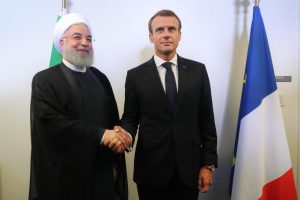by Aurélie M. Daher
In Hezbollah: The Global Footprint of Lebanon’s Party of God, Matthew Levitt, senior fellow at the Washington Institute for Near East Policy (WINEP) and a former senior U.S. counter-terrorism official, attempts to illustrate the threat posed to the West or its friends by Hezbollah, whose commitment to violence constitutes, in the author’s view, its very essence. A compilation of the various attacks attributed to the group since the early 1980s, the book consists essentially of a review of the various reports and investigations undertaken by the U.S. CIA and FBI, Israel’s Mossad, and a long list of other western security, intelligence, and counter-terrorism agencies.
An initial problem, which is widely exhibited in this genre, is raised at the outset by the way the thesis is supposedly substantiated. Levitt in effect commits the methodological error of covering what is a highly interactive process from only one point of view; in this case, Hezbollah is detached from its environment, its culture and from the contexts in which it has developed since its creation. It is detached above all from the actors with which it has interacted over its 30-year history.
Thus, Hezbollah’s violence is approached as if it took place in a vacuum, presented as relevant to its own ethos, and practiced according to a logic comparable to “art for art’s sake.” As was noted a few years ago by the sociologist Didier Bigo, however, “terrorism” as an analytical category “doesn’t exist.” In other words, terrorism approached exclusively as a study frankly doesn’t permit any understanding of the organization that is responsible for it, nor does it even provide a real understanding of the phenomenon of the violence itself. By extension, to study an organization by cataloguing the violent acts of which it stands accused explains nothing at all.
Indeed, terrorism, a form of violence, is never practiced for its own sake; it is rather undertaken as a means or as an expression of an idea or a message that requires identification. The intellectual challenge is not to look at the violence itself, but to identify the reasons for such a choice, the objectives the actor intends to achieve, the contexts and conditions for success of the chosen strategy, and the response that it provokes from the target. In that sense, Levitt’s book offers no clue, leaving us completely bereft of such enlightening elements.
Not a word, for example, regarding the realities of Israel’s second invasion of Lebanon in June 1982, the factor of social history that stands at the origin of Hezbollah. Nor does the book have anything to say about the realities of Israel’s military occupation of southern Lebanon, an occupation that lasted a not insubstantial 22 years in the course of which checkpoints, curfews, threats, and even violence, abductions, mass deportations and torture became daily concerns for some 200,000 Lebanese of whom nearly half ended up leaving—or being forced out of—their homes in the occupied zone. Not to mention the 11,000 Lebanese—that is, more than 15 percent of the remaining population—who, without any form of due process, spent time in Israeli prisons, some of them for more than ten years, still others until the end of their lives that were lost as a result of the abuses they suffered. This first category of very real sociological facts contextualizes Hezbollah’s violence, less as an essential trait of its nature than as a strategy of war carried out in response to another kind of violence inflicted on the larger community of which it is a part. Without seeking to justify Hezbollah’s violence, it would have seemed appropriate, both for the sake of intellectual integrity and analytic coherence, for the author to offer us explanatory details of a phenomenon that he claims to decipher.
A second problem is posed by the book’s very subject. Given the difficulty of gaining access to empirical material, cataloguing the malign acts of a clandestine organization as secretive as Hezbollah does not lend itself to strictly academic research, which must necessarily rely almost entirely on documents and sources from the murky world of international intelligence and espionage. Thus, one would have preferred that Levitt would have avoided unattributed assertions or affirmations—Hezbollah is this, Hezbollah does that—and instead referred back to the source on which his account relies—the CIA says that Hezbollah is this, the Mossad believes that Hezbollah does that. The presentation of Hezbollah in the book is thus less a factual and objective depiction as it is more a subjective recitation among similar works, especially when one considers the highly questionable record for reliability of western intelligence agencies regarding the Middle East in the past (including very recently)—a record upon which Levitt’s book unfortunately fails to improve. The fact is that the text abounds with vague, questionable, and un-contextualized assertions; that is, when they are not simply false.
At the same time, the author—who speaks no Arabic—fails to understand Hezbollah’s nature, as well as its aims. Nor does he have a grip on its internal organization or modus vivendi, just as he lacks familiarity with its history or environment and remains a stranger to the culture of its popular base. A number of events in the history of the region, and in particular, of Lebanon, are grossly distorted, leading at best to concerns about Levitt’s ignorance; at worst, about his intellectual honesty. His analysis of Hezbollah’s discourse is also literal; he thus interprets both ad hoc statements and lyrical flights of rhetoric by Hezbollah officials on ceremonial occasions as serious, well-planned strategies. For example, when, on the anniversary of the 2008 assassination of Imad Mughniye, which was very likely carried out by the Mossad, Hezbollah officials declare, “We haven’t revenged him yet but we will,” that hardly means, as Levitt appears to believe, that Hezbollah is preparing to attack Israel or Israelis imminently. It is a mandatory slogan, just as Iranians have chanted (albeit with diminishing conviction) “Death to America” at Friday Prayer rallies over the past 34 years.
This lack of context is pervasive, as are important omissions, intended or not. Like Saudi anti-Shiite propaganda, Levitt depicts Lebanese Hezbollah and several other organizations based in Saudi Arabia, Kuwait, and Iraq with the same name as one and the same, thus attributing to the Lebanese group the acts of the others when the latter are not only products of their own distinct national histories, contexts, and aims, but also maintain no links or coordination with their Lebanese homonym.
Indeed, contrary to Levitt’s assertion, Hezbollah wasn’t created in 1982. The Israeli invasion initially provoked the formation of the Islamic Resistance in Lebanon (IRL), a paramilitary group that first appeared in July of that same year. It wasn’t until several months later that the IRL chose to associate with a network of social and civic institutions that didn’t take definitive form as Hezbollah until the spring of 1984. The armed organization thus isn’t a branch, among others, of Hezbollah’s structure, but the inverse: Hezbollah is the civil extension of the IRL.
Moreover, Levitt’s attempts to describe the organization’s structure are replete with irrefutable errors of fact. Thus, the head of the Council of Jihad wasn’t Mughniye, nor even, after his 2008 assassination, Mustafa Badreddine, but rather Hassan Nasrallah himself, according to the group’s governing rules, which provide that the head of the IRL presides over the Central Decision Council under the secretary general. The mass media run by the party, similarly, are not responsible to the Political Council, as Levitt asserts, but to the Executive Council. These are just a few of the many simple errors in the book that naturally erode confidence in Levitt’s understanding of the most basic features of the organization.
Levitt’s own all-too-certain confidence in the reliability of reports by the CIA and its friendly counterparts leads him to a poor understanding of the socio-political contexts and developments that have taken place in the region during the past 30 years. For example, he notes, quoting from the CIA, that in the Bekaa Valley in 1987, “strict Islamic rule was implemented: Sale or transport of liquor are prohibited, women are forbidden from interacting with men in public and must adhere to a strict dress code, civil crimes are punished according to the Koran, and Western education and influences are prohibited.” Having myself grown up in Baalbek, the capital of the purported “Hezbollah State” in the Bekaa, I can attest without reservation that this description is a total fantasy: women wearing Bermuda shorts and short-sleeved and sleeveless t-shirts vastly outnumbered those donning chadors, however seductive, on the city’s streets. I also recall very clearly barbecues and other informal parties in our neighbours’ homes where orange juice was by no means the only beverage served for the thirsty. As in previous years, Hezbollah cadres lined up with other parents at the beginning of the academic year to enroll their kids in schools where Roman Catholic nuns taught classes in French. And in the courts, cases that applied Sharia law were not only extremely rare, but confined to those in which the families of criminal or tort victims specifically requested it.
In yet another example where Levitt’s sources have misinformed him, Israel did not withdraw from southern Lebanon in 2000 for the sake of upholding international law—such as UN Security Council Resolution 425—as asserted by the author. Rather, it followed the Israeli government’s recognition of its army’s total defeat faced with the determination, tenacity, and effectiveness of IRL attacks in the region. Another example in the recent past that the author doesn’t get quite right is his confident assertion that Hezbollah organized in 2006 an attack and abduction of Israeli soldiers on Israeli territory “and dragged both Israel and Lebanon into a war neither State wanted.” Aside from the fact that the alleged violation by the IRL of Israeli sovereignty remains a source of debate—only Israel maintains that the attack took place on its territory; Hezbollah, the Lebanese army and the UN peacekeeping force there (UNIFIL) have maintained it took place within Lebanon’s borders—Israel had made plans for a large-scale offensive against its northern neighbor four months before and had meanwhile been waiting for a pretext to launch it under a claim of self-defense, as admitted by the then-Israeli prime minister, Ehud Olmert, in March 2007.[1]
In the same way, one can’t simply take at face value Levitt’s version of the 1994 bombing of a Buenos Aires’ Jewish cultural center. At that time, the Argentine government maintained close relations with Tel Aviv; the Mossad indeed participated in the investigation that ultimately blamed Hezbollah, a conclusion embraced by Levitt. But the book unfortunately overlooks the fact that 18 years later, the Argentine government, having altered its foreign policy, agreed with Tehran to conduct a joint investigation. Nor does he note a more recent wrinkle from just last July when the former Argentine Interior Minister, Carlos Corach was accused of having supplied the explosives used in the attack, as reported by the World Jewish Congress. In other words, Levitt fails to take account of the flexibility that can sometimes influence judicial processes according to the political preferences of governments. Nor does he cite any serious critiques of the initial and subsequent investigations of the bombing by journalists, including Gareth Porter as in his 2008 Nation article or his more recent discovery that the 2006 indictment of top Iranian leaders for allegedly ordering the bombing relied virtually entirely on the testimony of the formerly-armed Iranian opposition group, the Mujahedin-E-Khalq (MEK). None of this means that Hezbollah is innocent of the bombing; it only demonstrates Levitt’s uncritical acceptance of and lack of curiosity about the “official” version, as recounted to him by his preferred intelligence sources.
The same selectivity brings him to place too much confidence in journalistic accounts about Hezbollah and Lebanese politics—some of which are susceptible to a number of interpretations or hypotheses, while others lack coherence. For example, media stories based on alleged leaks from the international commission investigating the assassination of former Lebanese Prime Minister Rafik Hariri, as presented in 2009 by the German weekly, Der Spiegel, and in 2010 by the Canadian television channel, CBC, were widely criticized—even by anti-Hezbollah forces who were in the majority at the time—for inconsistencies and inaccuracies. The indictment filed in 2011, which charged four alleged members of Hezbollah with the crime, is, according to the prosecutor himself, Daniel Bellemare, based on inferences and circumstantial—rather than direct—evidence. With the trial now getting underway, moreover, it appears that the SIM cards which, according to the commission, were used to plan and organize the assassination and subsequently to identify the perpetrators, belonged at the time—and still even today—to ordinary citizens who obtained them before the assassination.
While recognizing that Hezbollah is an organization that considers violence part of its strategic “toolbox,” one can’t but regret Levitt’s lack of basic knowledge and analytic rigor, not to mention his sensationalism and apparent ignorance of nearly 30 years of important studies that have focused on the modus operandi of this key actor on the Middle Eastern geo-political stage. If the book had been written by a seasoned and experienced regional specialist fluent in Arabic and fully conversant in the region’s culture, habits and customs, its basic thesis—that Hezbollah has been responsible for dozens of actual and planned attacks against western targets and remains today one of the West’s major threats—might be more convincing.
[1] See L’Orient-Le Jour, 9 March, 2007, a version of which is unfortunately unavailable online. See also this article by Seymour Hersh in The New Yorker, 21 August, 2006.






Thank you Ms Daher, for this interesting critique of Mr Levitt’s book on Hezbollah, which we wouldn’t otherwise be presented. Always glad to see these pieces, especially today when the P.R. machine[s] are cranking out revisionist facts and figures on an overtime basis. That this book is biased and slanted, goes without saying, as more and more of these same people seem to be scrambling for either recognition or what I call the “me too club”. Considering the present atmosphere that involves Iran and the West, which has those on the Israeli side up in arms, this book seem to feed the same appetite for pointing the finger[s] away from the bigger terrorist in the M.E., which is Israel, and the complacent U.S. Government standing by without doing anything. One only has to look at the M.E. today, to understand how this can be. Making the Hezbollah the meanie, which then makes Iran the boogieman, well, need I say more!
Very true. You cannot pretend to be an expert from unclassified CIA/FBI reports. If CIA/FBI know everything about Hezbollah, why the organisation has not being overpowered by both CIA/FBI if that is the intention?